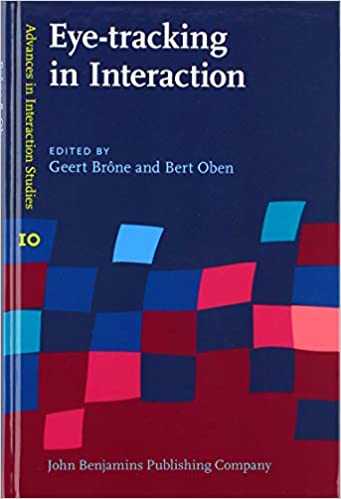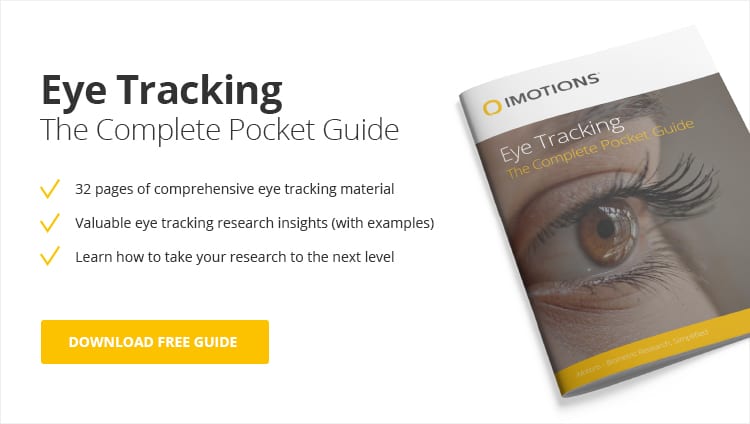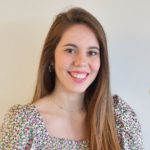Explore the 20 best books on eye tracking technology in 2025! Learn research methods, UX applications, psychology insights, and gaze-tracking techniques to enhance usability, marketing, and neuroscience studies. Ideal for UX designers, researchers, and marketers looking to master eye movement analysis.
Table of Contents
- 1. Eye Tracking: A Comprehensive Guide to Methods and Measures
- 2. Eye Tracking the User Experience: A Practical Guide to Research
- 3. Eye Tracking Methodology: Theory and Practice, 2nd Edition
- 4. Eye Tracking in User Experience Design
- 5. Eyetracking Web Usability
- 6. Eye Movements: A Window on Mind and Brain
- 7. Passive Eye Monitoring: Algorithms, Applications and Experiments (Signals and Communication Technology)
- 8. Eye Gaze in Intelligent User Interfaces: Gaze-based Analyses, Models and Applications
- 9. Current Trends in Eye Tracking Research
- 10. Active Vision: The Psychology of Looking and Seeing
- 11. Eye Tracking in Second Language Acquisition and Bilingualism: A Research Synthesis and Methodological Guide
- 12. Eye Tracking: A Guide for Applied Linguistics Research
- 13. Gaze Interaction and Applications of Eye Tracking: Advances in Assistive Technologies
- 14. Eye Tracking and Visualizations: Foundations, Techniques and Applications
- 15. Eye Tracking and Multidisciplinary Studies on Translation
- 16. Eye Tracking in Tourism
- 17. Eye Tracking Technology Applications in Educational Research
- 18. Cognitively Inspired Natural Language Processing: An Investigation Based on Eye Tracking
- 19. Eye-Tracking Processes and Styles in Sight Translation
- 20. Eye-Tracking in Interaction: Studies on the Role of Eye Gaze in Dialogue
Eye tracking technology has transformed how we understand human behavior, cognition, and visual attention. From user experience research to psychology and marketing, this technology provides valuable insights into decision-making and engagement.
If you’re looking to dive deeper into eye tracking methods, applications, and analysis, you need expert-authored books that offer comprehensive knowledge.
This curated list of 20 essential books on eye tracking will help beginners and professionals harness the power of gaze-tracking technology for research, business, and design.
Note: the books are not ranked in any way.
1. Eye Tracking: A Comprehensive Guide to Methods and Measures

Authors: Kenneth Holmqvist, Marcus Nystrom, Richard Andersson, Richard Dewhurst, Halszka Jarodzka & Joost van de Weijer
This must-read guide on eye-tracking methodology provides step-by-step insights into evaluating eye trackers, designing studies, and analyzing gaze data. Covering both technical fundamentals and theoretical frameworks, it explains how raw eye-tracking data is transformed into fixations and saccades. The book also explores AOIs, heat maps, and scanpaths, showing how eye movement data visualization enhances UX research, psychology, and marketing studies. Ideal for researchers, UX professionals, and behavioral scientists looking to master eye-tracking analysis techniques.
2. Eye Tracking the User Experience: A Practical Guide to Research

Author: Aga Bojko
This practical guide to eye tracking in UX research simplifies complex concepts for UX designers, researchers, and professionals. It provides step-by-step guidance on planning, conducting, and analyzing eye-tracking studies to enhance user experience (UX) evaluations. With expert insights on data interpretation and usability improvements, this book ensures eye-tracking findings are accurately presented and actionable.
This must-read book empowers UX professionals to leverage eye-tracking technology for better user engagement, web design, and product development.
Key Topics:
- Planning & executing eye-tracking studies
- Analyzing gaze data for UX research
- Interpreting and communicating eye-tracking insights
- Using heat maps, fixation data & scanpaths
- Optimizing web & mobile usability with eye tracking
3. Eye Tracking Methodology: Theory and Practice, 2nd Edition

Author: Andrew T. Duchowski
Eye Tracking Methodology: Theory and Practice (2nd Edition) is a must-read for researchers and UX professionals. This comprehensive guide covers the development and application of eye-tracking technology, with updated insights on the latest tracking innovations. The second edition includes technical descriptions, experimental methodologies, empirical guidelines, and five case studies, along with a research survey on recent advancements. Ideal for those seeking expert knowledge on gaze-tracking analysis, experiment design, and real-world applications.
Key Topics:
- New eye-tracking technology updates
- Experimental design & methodology
- Case studies & real-world applications
4. Eye Tracking in User Experience Design

Editors: Jennifer Romano Bergstrom & Andrew Schall
This expert-driven guide explores how eye tracking enhances user experience (UX) design, combining insights from 10 leading specialists in the field. It covers real-world applications in web usability, product development, and immersive technology, offering case studies on mobile devices, large screens, and gaming interfaces.
Key Topics:
- Eye tracking for UX research
- Enhancing web usability with gaze analysis
- UX design for mobile and large-screen displays
- Implementing eye-tracking data in product development
- Case studies on gaming and immersive experiences
5. Eyetracking Web Usability

Authors: Jakob Nielsen & Kara Pernice
This data-driven usability guide leverages eye tracking technology to analyze 1.5 million website interactions, revealing how users engage with web design. Using gaze plots, heat maps, and visual attention tracking, the authors provide actionable insights for UX designers, marketers, and developers. Based on a three-year study, this book uncovers critical user behavior patterns and delivers expert advice on optimizing page layouts, navigation, CTAs, advertisements, and image selection.
Key Topics:
- User eye movement analysis in web design
- How heat maps and gaze plots improve UX
- Best practices for website navigation & layout
- Optimizing site elements for better engagement
- Strategic ad placement & image selection
- Data-backed insights for improving conversions
6. Eye Movements: A Window on Mind and Brain

Editor: Roger PG van Gompel
This comprehensive guide explores eye-movement research across multiple disciplines, including psychology, neuroscience, linguistics, and computational modeling. It covers the history of eye-tracking studies, cognitive processing, visual attention, and scene perception, offering valuable insights into how eye movements shape human behavior and cognition.
Key Topics:
- History of eye-movement research
- Physiological & clinical studies of eye movements
- Transsaccadic integration and cognitive processing
- Eye tracking in spoken language perception
- Computational modeling of gaze behavior
- Attention and scene perception research
- Eye movements in real-world environments
7. Passive Eye Monitoring: Algorithms, Applications and Experiments (Signals and Communication Technology)

Editor: Riad I. Hammoud
This comprehensive guide to passive eye tracking explores both theoretical concepts and practical applications. Covering vision algorithms, human factors methodologies, and real-time measurements, the book provides essential insights into user calibration, feedback, and hardware considerations. It also showcases real-world applications in automotive, military, medicine, and marketing, making it an indispensable reference for researchers and professionals.
Key Topics:
- Fundamentals of Passive Eye Tracking – Vision algorithms & tracking techniques
- Human Factors & User Calibration – Accuracy, ergonomics & real-time feedback
- Hardware & Software Integration – Eye tracking system components & optimization
- Industry Applications – Use cases in automotive safety, military tech, healthcare diagnostics & consumer behavior
- Data Processing & Visualization – Heat maps, fixation patterns & gaze-tracking insights
8. Eye Gaze in Intelligent User Interfaces: Gaze-based Analyses, Models and Applications

Editors: Yukiko Nakano, Cristina Conati & Thomas Bader
This insightful book explores the role of eye-gaze tracking in human-computer interaction (HCI), shedding light on how gaze patterns reveal user intent, cognitive processes, and communication cues. It also examines human-human interactions, offering a deeper understanding of visual attention and dialogue comprehension. Additionally, the book introduces innovative gaze-aware interfaces that integrate eye-tracking technology as a system component, paving the way for more intuitive digital experiences.
Key Topics Covered:
- Eye-gaze tracking in HCI and its impact on user interaction
- Interpreting user intentions through gaze patterns
- Cognitive insights from eye movements in conversations
- Developing gaze-aware systems for adaptive interfaces
- Future innovations in gaze-based interaction
9. Current Trends in Eye Tracking Research

Editors: Mike Horsley (Editor), Matt Eliot (Editor), Bruce Allen Knight (Editor), Ronan Reilly
This book brings together the expertise of 50+ researchers and academics, showcasing cutting-edge eye-tracking studies and innovative applications. It explores pioneering research labs, highlighting breakthroughs in visual system analysis, EEG integration, marketing, and education.
Key Topics Covered:
- Eye Tracking & the Visual System – How eye movements reveal cognitive processes
- EEG & Eye Tracking Alignment – Combining brain activity with gaze data
- Marketing & Social Applications – Consumer behavior, advertising, and engagement
- Eye Tracking in Education – Enhancing learning through gaze-based studies
- Innovative Research Methodologies – New approaches in eye movement analysis
10. Active Vision: The Psychology of Looking and Seeing

Authors: John M. Findlay & Iain D. Gilchrist
This authoritative book on vision science explores how seeing and looking are active cognitive processes, integrating insights from neuroscience, psychology, and eye-tracking research. Written by renowned vision scientists, it highlights the significance of visual attention, emphasizing that over one-third of the human brain is dedicated to processing vision. Ideal for vision researchers, cognitive scientists, and psychology students, this book bridges eye-tracking technology with human perception for a deeper understanding of visual cognition.
Key Topics Covered:
- Active Vision Theory – How visual perception is an active, dynamic process
- Neuroscience of Vision – Understanding the brain’s role in visual processing
- Eye Movements & Cognition – The link between gaze, attention, and decision-making
- Applications in Psychology & AI – Using vision science in research & machine learning
- Eye-Tracking Research Techniques – How gaze behavior influences perception
11. Eye Tracking in Second Language Acquisition and Bilingualism: A Research Synthesis and Methodological Guide

Author: Aline Godfroid
This comprehensive guide explores the use of eye-tracking research in applied linguistics, providing foundational knowledge, methodologies, and practical insights. It introduces key eye movement principles, experimental paradigms, and data analysis techniques. Ideal for language researchers, cognitive scientists, and educators, it also offers guidance on setting up an eye-tracking lab for linguistic studies.
Key Topics Covered:
- Fundamentals of eye-tracking in linguistics
- Experimental paradigms for language scientists
- Data collection, processing, and interpretation
- Building and managing an eye-tracking lab
- Applications in second language acquisition & bilingualism
12. Eye Tracking: A Guide for Applied Linguistics Research

Authors: Kathy Conklin, Ana Pellicer-Sánchez & Gareth Carrol
This essential guide offers a practical introduction to eye-tracking technology and its applications in language research. Designed for both beginners and experienced researchers, it provides step-by-step guidance on designing eye-tracking studies, ensuring they meet the highest experimental standards. The book addresses common challenges and solutions while exploring real-world applications in linguistics and psychology.
Key Topics Covered:
- Introduction to eye-tracking in language research
- Designing high-quality eye-tracking studies
- Overcoming common research challenges
- Data collection and analysis methods
- Applications in second-language acquisition and bilingualism
13. Gaze Interaction and Applications of Eye Tracking: Advances in Assistive Technologies

Authors: Päivi Majaranta, Hirotaka Aoki, Mick Donegan, Dan Witzner Hansen, John Paulin Hansen, Aulikki Hyrskykari & Kari-Jouko Räihä
This essential guide explores interactive communication and control tools powered by gaze tracking, covering eye typing, computer control, and gaming applications. With a strong focus on assistive technologies, it provides practical guidance for researchers and professionals looking to develop interactive applications. The book also includes step-by-step instructions for building a DIY eye tracker using off-the-shelf components and presents efficient gaze-based interaction techniques.
Key Topics:
- Gaze-Based Communication – Eye typing and real-time interaction
- Assistive Technologies – Applications for accessibility and inclusion
- Gaming & Computer Control – Eye-tracking in entertainment and user interfaces
- DIY Eye Tracking – How to build an eye tracker from basic components
- Interaction Techniques – Smooth and efficient gaze-based controls
- Cutting-Edge Research – Latest advancements in gaze interaction
14. Eye Tracking and Visualizations: Foundations, Techniques and Applications

Authors: Michael Burch, Lewis Chuang & Brian Fisher, Albrecht Schmidt, Daniel Weiskopf
This authoritative book on eye tracking and visualization explores the latest research, methodologies, and advancements in human-computer interaction, psychology, and visual analytics. It provides insights into eye-tracking experiments, cognitive models, and immersive technologies, making it an essential resource for researchers and professionals in data visualization, UX, and AI-driven analytics.
Key Topics Covered:
- Visualization & Visual Analytics of Eye-Tracking Data
- Metrics & Cognitive Models for Eye Movements
- Eye-Tracking Experiments in HCI & UX
- Gaze Behavior in 3D & Immersive Environments
- Applying Eye Tracking in AI & Machine Learning
15. Eye Tracking and Multidisciplinary Studies on Translation

Authors: Callum Walker & Federico M. Federici
This book offers a cutting-edge exploration of eye tracking in Translation Studies, presenting practical methods, innovative research approaches, and experimental techniques. Divided into three key sections-Method, Process, and Product-it provides a comprehensive guide to conducting eye-tracking studies in linguistic and audiovisual translation research.
Key Topics Covered:
- Experiment Design – Setting up effective eye-tracking studies
- Statistical & Analytical Methods – Processing gaze-tracking data
- Translation Process Analysis – Studying how translators interact with texts
- Audience & Reader Response – Understanding engagement & comprehension
- Audiovisual Translation – Gaze behavior in subtitling & dubbing
16. Eye Tracking in Tourism

Authors: Mattia Rainoldi & Mario Jooss
This book fills the gap in eye tracking research for travel and tourism, exploring the strategic value of table-mounted and head-mounted ET solutions. It features academic insights and real-world case studies, demonstrating how eye tracking enhances user experiences, marketing, and decision-making in the tourism industry.
Key Topics:
- Table-mounted vs. mobile head-mounted eye tracking
- How eye tracking enhances travel experience analysis
- Marketing applications in hospitality & tourism
- Consumer behavior insights through gaze tracking
- Real-world case studies in travel research
17. Eye Tracking Technology Applications in Educational Research

Authors: Christopher Was, Frank Sansosti & Bradley Morris
This essential reference explores eye-tracking applications in education, offering insights into cognitive processing, student engagement, and instructional design. Written by leading researchers, the book provides cutting-edge methodologies and practical applications for educators, administrators, and researchers looking to enhance learning strategies using gaze-tracking technology.
Key Topics:
- Eye Tracking in Classroom Learning – Understanding student engagement & comprehension
- Cognitive Load & Eye Movements – How gaze behavior reflects mental effort
- Visual Attention & Reading Strategies – Insights into literacy and learning styles
- Designing Effective Educational Tools – Optimizing multimedia and digital learning materials
- Applications in Special Education – Using eye tracking for autism, ADHD, and learning disabilities
- Gaze-Based Learning Analytics – Enhancing adaptive learning with real-time eye movement data
18. Cognitively Inspired Natural Language Processing: An Investigation Based on Eye Tracking

Authors: Abhijit Mishra & Pushpak Bhattacharyya
This groundbreaking book explores how eye-tracking technology enhances Natural Language Processing (NLP) systems through cognitive-mode language processing. The authors utilize gaze pattern analysis to extract cognitive insights, improving machine understanding of human language. Ideal for AI researchers, linguists, and NLP engineers seeking innovative approaches to computational linguistics.
Key Topics Covered:
- Eye-tracking applications in NLP
- Gaze pattern analysis in cognitive computing
- Enhancing machine learning models with human reading behavior
- Impact of eye movement data on AI language processing
- Human-in-the-loop approaches for NLP training
19. Eye-Tracking Processes and Styles in Sight Translation

Author: Wenchao Su
This book explores sight translation research using eye-tracking technology, analyzing textual processing, problem-solving, and reading-speech coordination in both novice and professional interpreters. By examining gaze behaviors, it categorizes different cognitive processing styles, offering valuable insights into interpreter performance and efficiency.
Key Topics Covered:
- Sight Translation & Eye Tracking – How gaze data enhances translation research
- Textual Processing in Interpreters – Understanding how professionals read and interpret texts
- Problem-Solving Patterns – Identifying strategies interpreters use during translation
- Reading-Speech Coordination – Examining the relationship between reading and spoken output
- Cognitive Processing Styles – Categorizing different approaches used by interpreters
20. Eye-Tracking in Interaction: Studies on the Role of Eye Gaze in Dialogue

Authors: Geert Brône & Bert Oben
This authoritative volume explores the role of eye gaze in interaction, covering both human-human and human-computer interactions. It brings together cutting-edge research from multiple disciplines, offering a technological approach to measuring eye movement patterns in communication. Using eye-tracking technology, this book uncovers how speakers and hearers engage visually during interaction, providing valuable insights for researchers, UX designers, and AI developers.
Key Topics Covered:
- Eye gaze in verbal and non-verbal communication
- Human-computer interaction & gaze-based UI design
- Cognitive and linguistic aspects of eye tracking
- Research methodologies using eye-tracking tools
- Visual attention in social and digital environments
We hope you have found some great inspiration and will be filling your head with knowledge. If you are still thirsty for more insights into the world of Eye Tracking, feel free to check out our free Eye Tracking pocket guide, to take your insights to the next level.












